My post Saturday about Giant Sloths in South America, and evidence of their slaughter by humans, which pushes the date of human migration to the New World back to c. 30,000 years ago, caused me to wonder again about the path of migration.
Credit: A Genomic History of South America
We were taught that the Americas were populated by a migration of Asians across the Bering Straits after the Last Glacial Maximum (LGM) when the glaciers began to recede, perhaps 10,000 years ago. But recent findings, some of which were discussed in the Giant Sloth post, provide evidence that humans were in the Amazon Basin much earlier, perhaps 30,000 years ago, as shown above.
Could they have arrived by seafaring canoe? The Polynesians had developed excellent sailing techniques, as described so well in this excellent article in the Smithsonian, How the Voyage of Kon-Tiki Mislead the World About Navigating the Pacific. The article describes the amazing navigational skills of the Polynesians.
Let’s begin the query: who, how, where and when?
Who were the people that settled the Americas?
How did they arrive?
Where did they come from?
When did they arrive?
Here is some of the evidence to consider:
Footprints.
Artifacts.
Sea levels
Climate
The Sweet Potato.
Sailing technology
DNA and rDNA genetics of the Pre-Colombian population of the Americas.
Let’s start with footprints, shall we?
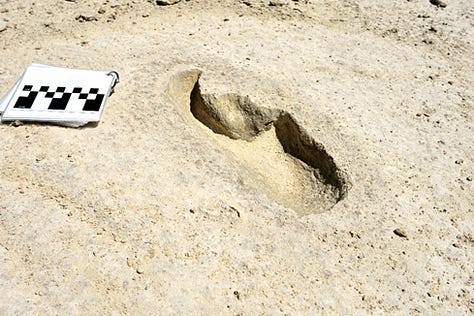
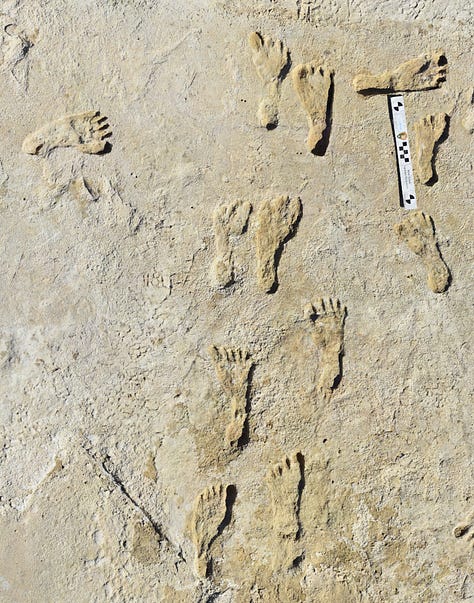
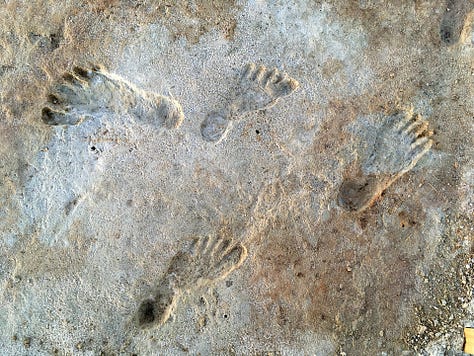
Scientists claim that these footprints show humans tracking a Giant Ground Sloth, like the one we discussed yesterday. They can be found at White Sands National Park, New Mexica, USA.
The chart above provides excellent detail on the number, age, and type of footprints found. They date the prints by radiocarbon testing of pollen found within the same layer.
Here’s the conclusion of the scientists:
The evidence presented here confirms that humans were present in North America before the glacial advances of the LGM closed the Ice-Free Corridor and the Pacific Coastal Route and prevented human migration from Asia. The overlap of humans and megafauna for at least two millennia during this time suggests that if people were hunting megafauna the practices were sustainable, at least initially. This also raises the possibility of a human role in poorly understood megafauna extinctions previously thought to predate their arrival and makes “early” sites in the Americas appear more plausible. However, exactly when people first arrived in the Western Hemisphere and when continuous occupation was established are still both uncertain and contested. What we present here is evidence of a firm time and location when humans were present in North America.
Evidence of humans in North America during the Last Glacial Maximum (LGM), Science, 2021.
Here’s my takeaway: SOMEBODY made these footprints before the last glacier started to recede. They were hunting megafauna like the giant sloths we talked about yesterday.
Credit: Creative Commons. How about DNA? Genetics is a fascinating science. It’s a relatively new field that provides amazing insights. But there is one important caveat: Genetics only accounts for the people being sampled. If an earlier population was wiped out by a subsequent invasion, the first folks may have left no genetic trace behind.
Most of the Amerindians who have had their chromosomes analyzed came from Asia, and specifically are descended from the Y Chromosome haplogroup Q-M242.
Credit: Creative Commons. But obviously all the native people in the Americas have not been sampled.
Here is the best study I have found on the genetics of the Americas: “A genomic perspective on South American human history,” Silva, Ferrari, and Hünemeier, 2022.
Another study, Deep genetic affinity between coastal Pacific and Amazonian natives evidenced by Australasian ancestry, identifies a genetic signal that connects Amazonian natives to Australasian ancestry, which would include Polynesians, and argues that the reason this Australasian ancestry doesn’t appear in North America is because they arrived via the coastal routes along the Pacific.
At the time of the LGM the sea levels were 100 meters lower, so evidence of habitation and migration along the coast would have been covered up when the seas rose. Subsequent waves of populations arguably wiped out the genetics of the first folks.
That may have been. But there is another possibility: Perhaps the Australasians arrived directly!
In addition to some genetic evidence, there is also the the Sweet Potato and Handclub connection between Australasia and South America.
Above: Top Row - Māori Handclubs (New Zealand). Bottom row - Mapuche Handclubs (Chile). Credit: Science
The similarity between these weapons may point to some connection between Polynesians and South Americans.
The Sweet Potato was developed in the Peruvian Andes about 6000 years ago. Somehow it made its way to Polynesia at least 1,000 years ago.
Clearly the Polynesians had some contact or connection with South America. But based on the current dating, my guess is that the contact was well after the settlement of South America. The warclubs found in Guayaquil, Ecuador, may have been copied from those used by some not so friendly Polynesians who dropped in for a visit and left with some sweet potato fries to go.
We know early Polynesians sailed in an area bounded by a triangle between New Guinea, Hawaii and Easter Island. It seems unlikely that they would have made it to South America before arriving in Easter Island and Hawaii, which didn’t occur until about 400 - 1000 CE. By then the civilizations in South America were well established.
Based on what I have seen so far, I think there was an early settlement of the Americas by people who migrated along the Pacific shore line from Japan north and east about 30,000 years ago. (I’m trying to find a more detailed map that shows the location of the coastline once the sea levels had dropped.)
There must have been some partial thawing of the ice during the summer and perhaps for 100 years or so that would have permitted, indeed invited, humans to travel by land and along the shore to the Americas.
Eventually they would have made it to South America, and Amazonia. A subsequent wave of humans after the glaciers started to recede would have easily displaced those first folks, wiping out much of their DNA. The remnant populations were most likely driven into the Amazon by the new invaders. This would be about 10,000 years ago. Just as the early settlers of Wales eventually got driven to the extreme west of Europe, these First People got pushed aside by the newcomers.
Later some South Americans near Guayaquil were visited by some Polynesian voyagers, who picked up some Sweet Potatoes to take home to the wife. I’ll bet those Polynesians got a warm welcome on their return!
We tend to think we are smarter than those who came before us. But the reality is that these people were pretty dang smart! And they wanted to survive and thrive, as we all do.
Thanks for traveling along! I need to get back to my Egyptian Mythology! Our plane departs for Cairo a week from tomorrow!
Opening Photo Credit: Perrin Remonté


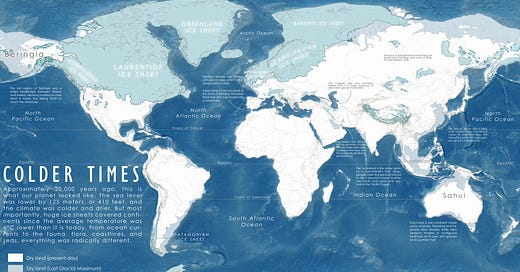



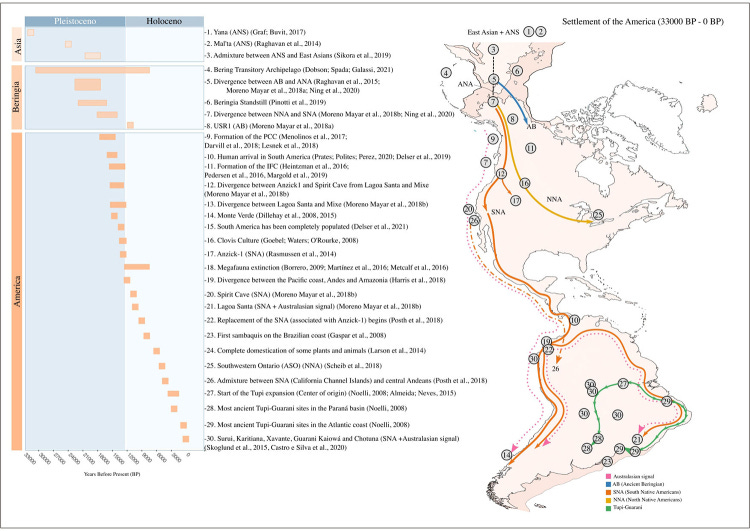
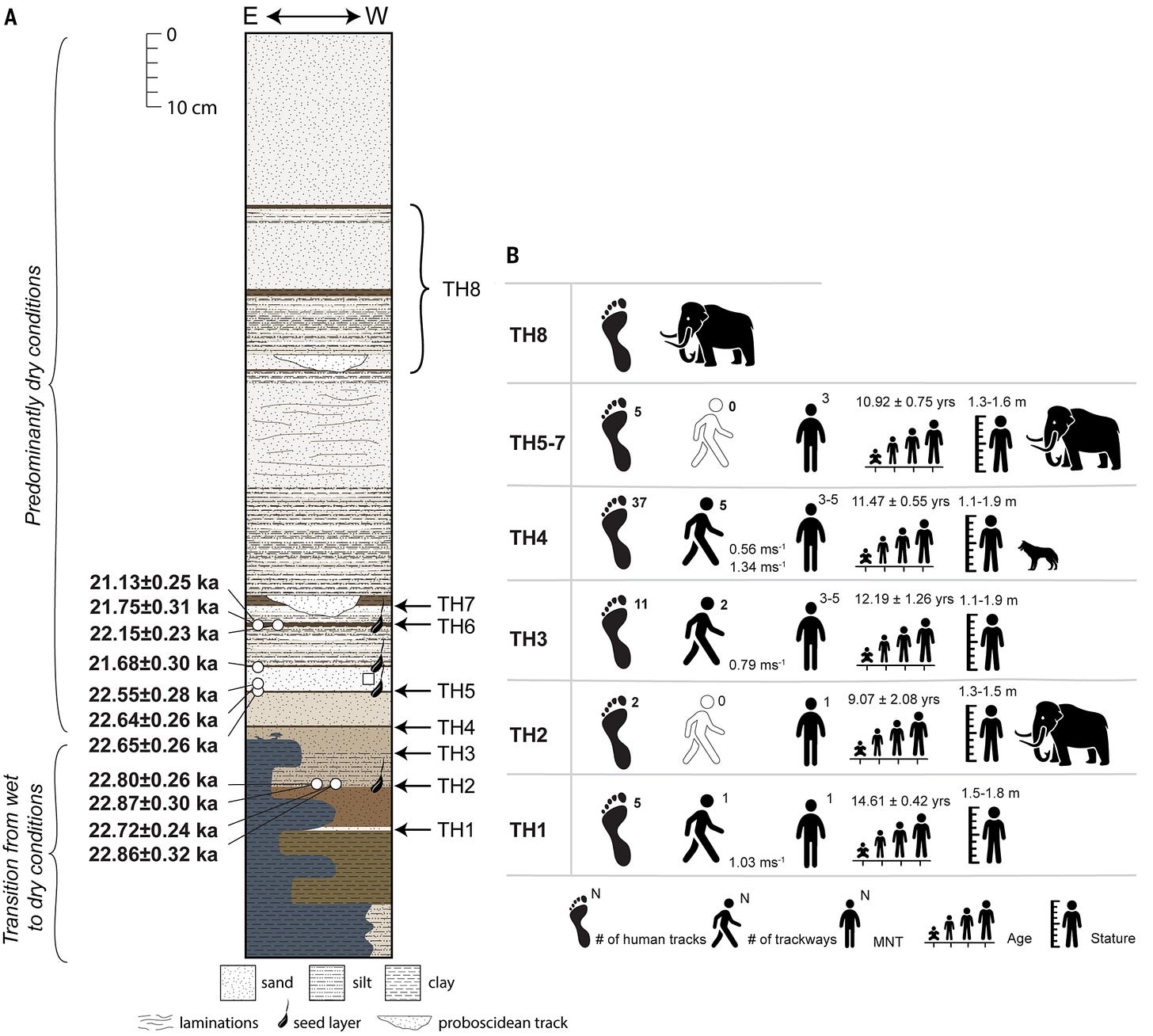
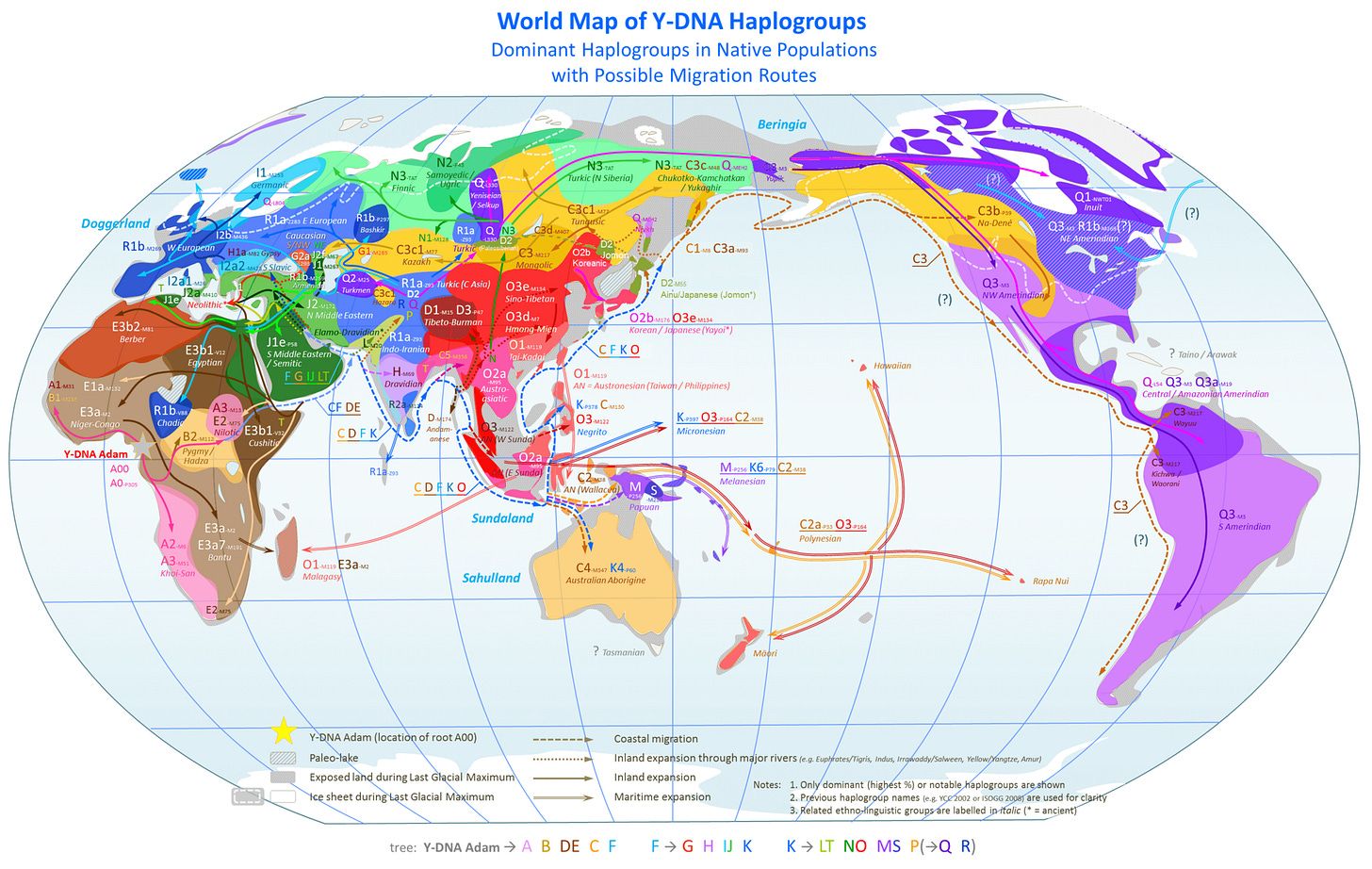

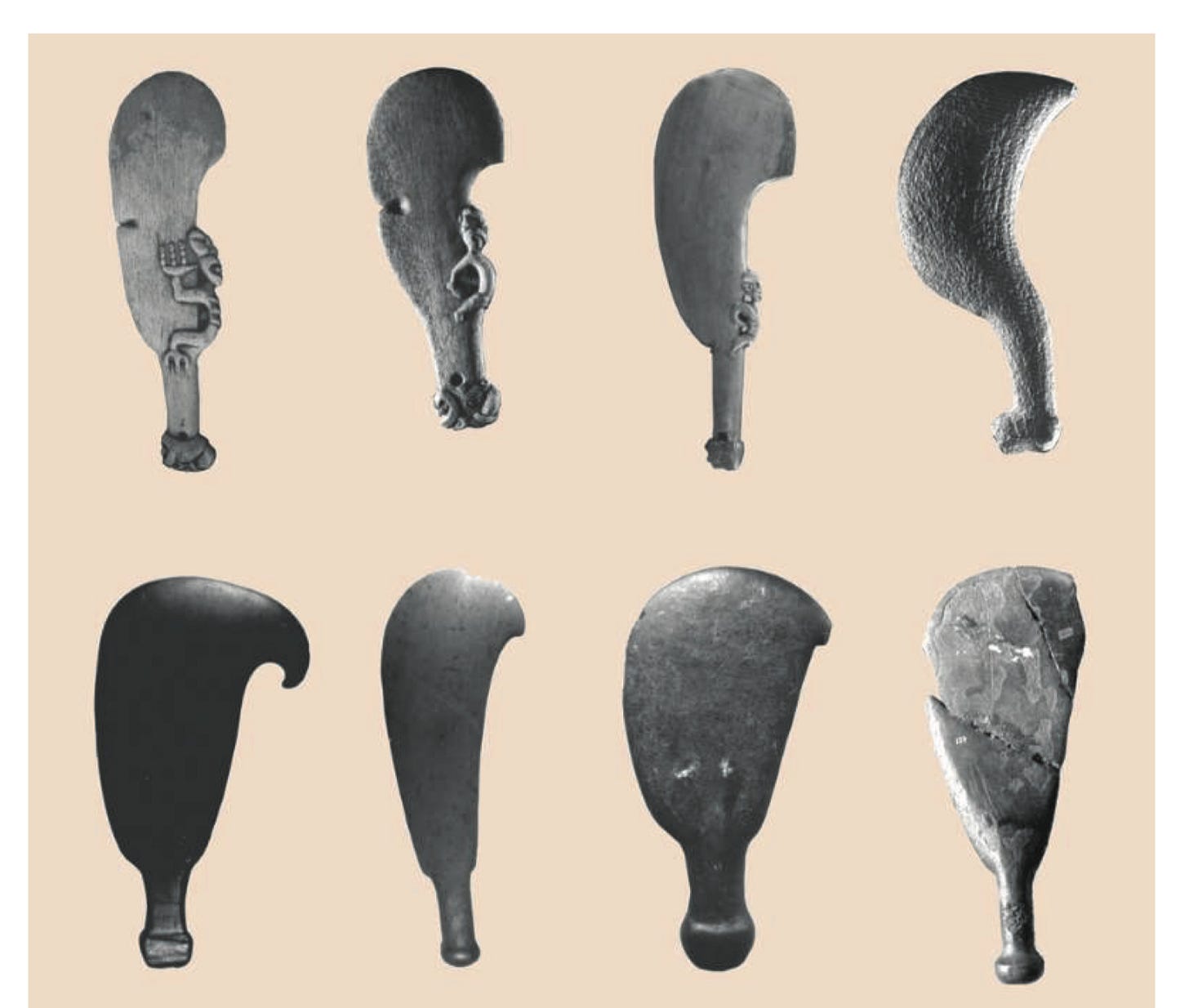
Interesting. My husband likes to throw in the concept of continental drift when dealing with ancient worlds and global climates. Okay! Another thing: the movement to other continents on land. Polynesians were not only adept sailors, their boats were big enough for whole families to live on during these journeys. If there was a spit of land to camp on, sure ... get out and stretch the old sea legs; otherwise, with the escort of sea turtles I mentioned in your previous articles, they just kept following the coastlines. Also, ocean sea travel was something they had mastered and didn't fear.
Peoples across the planet have been sailors, including those from the Middleast and western Europe. We are learning more about the Vikings' travels to the Atlantic Coast and further inland, but the Basques were quite the sea navigators. Moors wandered up the European coast, landing and socializing with people in Ireland and Scandinavia. (Black Irish and Swarthy Danes.)
I enjoyed this post about how people were brave or confident enough in their abilities to venture out into the world. From my family's research we were in Scotland and Ireland in the mid 1400's on my father's side. On my mom's side the last time I went to a reunion the people doing the trace said they would have to go to another direction because the people they were tracing just disappeared. I asked my grandfather what he meant, and he said, " they probably got hung for stealing horses".